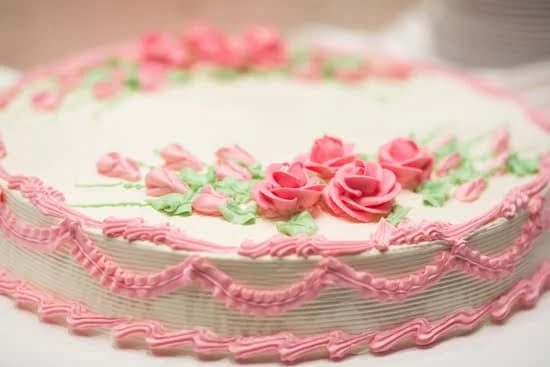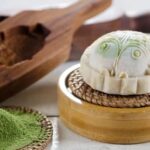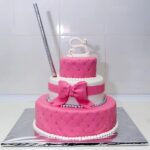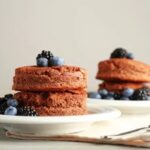Cake Decorating Succulents have become the latest trend in the world of cake decorating. This unique and visually appealing technique has gained popularity due to its ability to create stunning and lifelike succulent designs on cakes. In this article, we will explore the growing popularity of incorporating succulents into cake decorating and highlight the key aspects that make this trend so captivating.
Succulents have long been admired for their beauty and resilience, making them an ideal choice for cake decorators looking to add a touch of natural elegance to their creations. The intricate details and unique shapes of succulents make them a perfect inspiration for creating stunning cake designs that are both visually striking and delectable.
The rise of social media platforms like Instagram and Pinterest has played a significant role in popularizing this trend, as more and more cake decorators showcase their artistic creations featuring realistic succulent decorations. Not only do these designs capture the attention of viewers with their beauty, but they also inspire other bakers to try their hand at creating their own succulent masterpieces.
In the following sections of this article, we will delve deeper into the art of cake decorating succulents. We will discuss selecting the right type of cake for succulent decoration, essential tools and materials needed for crafting lifelike succulents, step-by-step guides on shaping fondant into different succulent shapes, piping techniques for buttercream designs, color mixing tips, arrangement strategies, troubleshooting common challenges, showcasing inspiring designs from professionals, and finally encouraging readers to unleash their creativity with succulent cake decorating.
Let’s dive into this delightful world where edible art meets nature’s beauty.
Choosing the Right Cake for Succulent Decoration
When it comes to cake decorating with succulents, selecting the right cake is essential to creating a visually stunning and cohesive design. Different types of cakes work well with succulent decorations, and factors such as base texture, taste, and durability should be considered. Here are some tips to help you choose the perfect cake for your succulent design.
Buttercream or Fondant?
One important decision to make is whether you want to use buttercream or fondant as the base for your cake. Both options have their own unique advantages. Buttercream cakes offer a soft and flavorful canvas for your succulents while providing a more rustic and natural look. On the other hand, fondant cakes provide a smooth surface that allows for more intricate details in your succulent arrangements.
If you opt for buttercream, it is important to ensure that your recipe creates a sturdy consistency that can hold up the weight of the fondant succulents without melting or losing shape.
Considering Shape and Size
Another crucial consideration when choosing a cake for succulent decoration is its shape and size. This can greatly affect how well your succulent design will fit and appear on the cake.
For example, round cakes lend themselves well to cascading or cluster designs where multiple succulents are arranged together. Square or rectangular cakes, on the other hand, may work better for depicting individual potted plants or creating neat rows of different succulent varieties.
Additionally, consider the size of your cake in relation to your intended succulent arrangement. A larger cake provides more space for creativity and intricacy, while smaller cakes may require simpler designs to ensure that each element stands out effectively.
By carefully considering these factors before starting your project, you can ensure that you choose a cake that complements and enhances your succulent decorations instead of overpowering them.
Essential Tools and Materials for Cake Decorating Succulents
Cake decorating succulents require a specific set of tools and materials to achieve realistic and visually appealing designs. Whether you are working with fondant or buttercream, having the right equipment is crucial for creating lifelike succulent decorations. Here is a comprehensive list of essential tools and materials you will need:
- Piping Bags: Piping bags are essential for applying buttercream or royal icing to create intricate textures and details on the succulent decorations. Disposable piping bags are convenient and come in various sizes.
- Piping Tips: Different piping tips create different effects when it comes to mimicking succulent patterns and textures. For example, leaf tips can be used to create pointy leaves, while star tips can produce layered petals.
- Fondant Tools: If you are working with fondant, there are several specialized tools that will come in handy. These include fondant modeling tools for shaping the succulent leaves and petal cutters for creating uniform shapes.
- Silicone Molds: Silicone molds allow you to easily create realistic succulent shapes without having to shape them by hand. There are various silicone molds available that feature different types of succulents, making it easy to achieve consistency in your decorations.
- Edible Dusts and Gel Colors: Using edible dusts and gel colors is an excellent way to add depth and shading to your succulent decorations. Dust colors such as green, purple, or gray can help replicate the natural tones found in real succulents.
- Tweezers: Tweezers can be very useful when handling small or delicate pieces of fondant or when arranging tiny details on your cake decorations.
When it comes to selecting brands or products, there are several reliable options available on the market. Popular brands for piping bags include Wilton or Ateco, while for piping tips, you may consider brands like Russian Piping Tips or PME Decorating Tips.
By having these essential tools and materials at your disposal, you will be well-equipped to create stunning succulent decorations for your cakes. Remember, the quality of your equipment can greatly influence the final result, so investing in good quality tools is worth it in the long run.
Step-by-Step Guide
Creating lifelike succulent decorations from fondant is a popular technique in cake decorating. The process requires precision and attention to detail, but with the right tools and instructions, anyone can create stunning succulent designs. In this step-by-step guide, we will break down the process of shaping fondant into various succulent shapes, including rosettes, echeverias, and hens and chicks.
Step 1: Gather Your Materials
Before you start creating your fondant succulents, make sure you have all the necessary tools and materials. This includes fondant in various colors (green for the plants and additional colors for accents), a rolling pin for rolling out the fondant, edible glue or water to adhere the different pieces together, a small brush for applying glue or water, cornstarch or powdered sugar for dusting your work surface, and various shaping tools such as ball tools and veining brushes.
Step 2: Prepare Your Fondant
Take a small amount of green fondant and knead it until it becomes soft and pliable. If your fondant feels too sticky, you can incorporate some cornstarch or powdered sugar to achieve a better consistency. Once your fondant is ready, roll it out to about 1/8 inch thickness on a surface dusted with cornstarch or powdered sugar.
Step 3: Shape Your Succulents
Using different shaping tools or even household items like spoons or toothpicks, start shaping your fondant into different succulent shapes. For rosettes, gently roll up one end of the rolled-out fondant strip tightly while gradually widening the coil as you go along.
For echeveria shapes, flatten circular pieces of fondant slightly with your fingers and use ball tools to create indents around the edges for texture. To make hens and chicks succulents, shape small balls of green fondants for the hens and flatten larger pieces for the chicks.
Step 4: Assemble Your Succulents
Once you have shaped your individual succulent pieces, it’s time to assemble them into complete plants. Apply a small amount of edible glue or water where the different pieces will meet and gently press them together. You can mix and match different shapes and colors to create a variety of succulent designs. Allow the assembled succulents to dry and harden slightly before placing them on your cake.
By following these step-by-step instructions, you can create lifelike succulent decorations from fondant that will elevate your cake decorating skills. Remember to experiment with different shapes, sizes, and colors to add variation to your designs. With practice and creativity, you can master the art of cake decorating with succulents.
| Materials | Tools |
|---|---|
| Fondant in various colors (green for plants) | Rolling pin |
| Edible glue or water | Small brush |
| Cornstarch or powdered sugar | Shaping tools (ball tools, veining brushes) |
Tips and Tricks for Piping Succulent Buttercream Designs
Piping buttercream designs can be a fun and creative way to incorporate succulents into your cake decorating. With the right techniques and tools, you can create realistic textures and patterns that mimic the appearance of succulent plants. Here are some tips and tricks to help you achieve stunning results:
- Choose the right piping tips: The type of piping tip you use will greatly affect the final result of your succulent design. For creating rosettes or petals, a petal tip (such as a Wilton #104 or #125) works best. If you want to create spiky or pointy leaves, a leaf tip (such as a Wilton #352) is ideal. Experiment with different tips to find the ones that give you the desired look.
- Practice pressure control: Achieving varying shades and textures in your buttercream succulents requires controlling the pressure applied while piping. To create depth and dimension, start with more pressure at the base of your petal or leaf, gradually decreasing it as you move towards the tip for a tapered effect.
- Mix colors for natural tones: Just like real succulents come in various shades, mixing different colors of buttercream can help you achieve realistic tones. Start with a base color and add small amounts of other colors to create variations within each design. Use a toothpick or small spatula to blend the colors together before filling your piping bag.
- Add texture with brushes or combs: To enhance the lifelike appearance of your succulent buttercream designs, consider using textured brushes or combs on your piped petals or leaves. Gently press them onto the buttercream while it’s still soft to create subtle lines or ridges that mimic natural plant surfaces.
- Work with chilled buttercream: Buttercream that is too warm can be difficult to work with and may not hold its shape well when piped onto your cake. Chill your buttercream in the refrigerator for about 10-15 minutes before piping to make it easier to handle. You can also chill your piping bag and tip for better control.
By following these tips and tricks, you’ll be well on your way to creating beautiful succulent buttercream designs that will amaze your friends and family. Remember, practice makes perfect, so don’t be discouraged if your first attempts don’t turn out exactly as planned. Keep experimenting and exploring different techniques to unleash your creativity with succulent cake decorating.
- Choose the right piping tips
- Practice pressure control
- Mix colors for natural tones
- Add texture with brushes or combs
- Work with chilled buttercream
Mixing Colors
When it comes to cake decorating succulents, one of the key factors in creating a truly realistic and visually appealing design is achieving the right colors for your succulent decorations. Replicating the natural hues and shading found in succulents can make all the difference in bringing your cake to life. In this section, we will explore different color mixing techniques and provide guidance on using various edible coloring methods to achieve realistic succulent tones.
Color Mixing Techniques
To achieve accurate colors that mimic those found in real succulents, it’s important to understand some basic color mixing techniques. Generally, a combination of primary colors – red, yellow, and blue – along with black and white can create a wide spectrum of shades and tones.
Start by experimenting with small amounts of each color until you reach your desired tone. Remember that a little goes a long way when working with food coloring, so start with just a drop or two and gradually add more as needed. Be patient and take your time during the mixing process to ensure accurate results.
Edible Dusts, Gel Colors, and Airbrushing
In addition to traditional liquid food coloring, there are other methods you can use to enhance the realistic appearance of your succulent decorations. Edible dusts are finely ground powders that can be brushed onto fondant or gum paste to add depth and texture. These dusts come in various shades and can be mixed together for custom colors.
Gel colors are thicker than liquid food coloring and offer more concentrated pigments. They are ideal for tinting buttercream icing or fondant since they do not alter the consistency as much as liquid food coloring does.
Airbrushing is another popular technique used by professional cake decorators to achieve smooth gradients of color on their cakes. With an airbrush machine and edible airbrush colors, you can create stunning ombre effects or blend multiple shades seamlessly.
Combining Different Methods
To achieve the most realistic succulent tones, consider combining different coloring methods. Start with a base color using gel colors or liquid food coloring, and then add depth and dimension using edible dusts. For a more advanced technique, try airbrushing subtle shading on your fondant succulent decorations to mimic the natural gradient found in real plants.
Remember that practice makes perfect when it comes to mixing colors for cake decorating succulents. Don’t be afraid to experiment and blend different shades until you find the perfect combination for your design. By mastering the art of color mixing, you’ll be able to bring your succulent cake designs to life and impress your guests with their realistic appearance.
Arranging Succulent Decorations on Cakes
When it comes to cake decorating with succulents, the arrangement of these edible decorations plays a crucial role in achieving an eye-catching and visually appealing design. The placement of succulent decorations can make or break the overall effect of the cake. In this section, we will discuss various placement options and design strategies for arranging succulent decorations on cakes.
Firstly, it is important to have a vision for how you want your succulent cake design to look. Consider the overall theme and style you are aiming for, whether it be a rustic desert-inspired design or a more modern and abstract arrangement. This will guide you in selecting the appropriate succulent shapes, colors, and sizes for your cake.
One popular approach is to create a focal point by arranging a cluster of larger succulents at the center of the cake. This creates a visually striking arrangement that immediately draws attention. You can then work outward from this focal point by adding smaller succulents and fillers around it. This provides depth and interest to the overall design.
Another effective technique is to create movement and flow by arranging the succulents in clusters or cascading arrangements along one side of the cake. This creates an organic and natural-looking composition that mimics how succulents often grow in nature. It also makes for an interesting visual contrast against the smooth surface of the cake.
To enhance the overall effect, consider incorporating other edible elements such as rocks or moss into your arrangement. These additional elements can help create texture and provide a more realistic representation of a succulent garden.
| Placement Options | Design Strategies |
|---|---|
| Create a focal point with a cluster of larger succulents | Incorporate movement and flow with cascading arrangements |
| Add smaller succulents and fillers around the focal point | Consider incorporating other edible elements like rocks or moss |
Troubleshooting Common Challenges in Succulent Cake Decorating
Cake decorating with succulents can be a fun and visually stunning way to add a unique touch to your baked creations. However, like any artistic endeavor, there may be some challenges that arise along the way. In this section, we will address common issues that cake decorators may encounter when working with succulents and provide practical solutions and expert tips to help overcome these challenges.
One common challenge that cake decorators may face is fondant cracking. Fondant can be delicate and prone to drying out, which can lead to unsightly cracks in your succulent decorations. To prevent this from happening, it’s important to keep your fondant properly moisturized. One tip is to knead a small amount of vegetable shortening into the fondant before shaping it. This will help keep it pliable and less likely to crack.
Another challenge that often arises is buttercream melting. This can happen if your cake or room temperature is too warm. To prevent buttercream from melting and causing your succulent decorations to lose their shape, you can try refrigerating or freezing your cake before applying the buttercream. You can also chill your piping bags and tips in the refrigerator before using them for additional cooling.
Additionally, sometimes when creating intricate designs with piping buttercream, it can be challenging to achieve the desired texture or pattern for your succulents. One helpful tip is to practice piping on a flat surface first before attempting it on your cake. This will allow you to get a feel for the pressure needed and the movement required to create realistic succulent textures.
By being aware of these common challenges and implementing these troubleshooting techniques, you will be well-equipped to tackle any obstacles that may come your way in succulent cake decorating. Remember, practice makes perfect, so don’t give up if things don’t turn out exactly as planned at first. With time and experience, you’ll be able to create beautiful succulent cake designs that are sure to impress.
Stay tuned for the next section, where we will showcase inspiring succulent cake designs from professionals, providing further inspiration and motivation for your own cake decorating journey.
Showcase
In order to further inspire readers and showcase the immense creativity that can be achieved with succulent cake decorating, this section will highlight a selection of impressive succulent cake designs created by professional cake decorators. These experts have perfected the art of incorporating lifelike succulents into their cake designs, resulting in breathtaking and visually stunning creations.
One such professional is Jane Adams, an award-winning cake decorator known for her intricate and realistic succulent cakes. Her attention to detail is evident in each design, as she meticulously replicates the textures, colors, and shapes of various succulent species. From cascading rosettes to clustered echeverias, Adams’ cakes are truly works of art.
Another noteworthy professional in the field is David Chen. With his unique approach to succulent cake decorating, he combines both buttercream and fondant techniques to create multi-dimensional and lifelike succulent designs. Chen’s cakes often feature vibrant colors and beautifully piped details which add depth and complexity to his creations.
Lastly, we cannot overlook the talent of Emily Rodriguez, who specializes in creating sculptural succulent cakes that push the boundaries of traditional cake decorating. Her designs often incorporate other edible elements such as rocks or moss to enhance the overall effect. Rodriguez’s ability to transform basic ingredients into jaw-dropping centerpieces is truly remarkable.
By studying these professionals’ work, it becomes clear that there are endless possibilities when it comes to incorporating succulents into cake decorating. From simple buttercream textures to elaborate fondant sculptures, their creations serve as inspiration for aspiring decorators looking to unleash their own creativity. By experimenting with different techniques and combining various design elements, anyone can create their own unique succulent cake masterpiece.
Conclusion
In conclusion, succulent cake decorating offers a unique and visually appealing trend that has been steadily rising in popularity. The combination of realistic succulent designs with delicious cakes not only adds an eye-catching element to any celebration, but also allows for endless creativity and customization.
Throughout this article, we have explored various aspects of cake decorating with succulents, from selecting the right cake and tools to creating lifelike fondant and buttercream designs. We have discussed color mixing techniques, placement options, troubleshooting common challenges, and even showcased inspiring designs from professionals in the field.
Now that you have gained a comprehensive understanding of how to create stunning succulent cake decorations, it is time to unleash your own creativity. Whether you are a professional baker or an enthusiastic home decorator, let your imagination fly as you experiment with different shapes, colors, and arrangements. Use this newfound knowledge to turn ordinary cakes into extraordinary works of art.
Remember that practice makes perfect, so don’t be discouraged if your first few attempts are not exactly what you envisioned. Keep honing your skills and pushing yourself to try new techniques. There are countless resources and tutorials available online that can provide further guidance along your journey.
So go ahead and dive into the beautiful world of succulent cake decorating. Let the lush colors and textures of nature inspire you as you create edible masterpieces for all to enjoy.
Frequently Asked Questions
Can I put real succulents on a cake?
Yes, it is possible to put real succulents on a cake, but it is important to consider a few factors before doing so. First, make sure the succulents you are using are safe for consumption and have not been treated with any harmful chemicals. Additionally, ensure that the type of succulent you choose can withstand being out of soil for the duration of the event without wilting or dying.
Before placing them directly on the cake, it is advisable to wrap the stem in floral tape or insert a food-safe barrier between the succulent and the cake to prevent any potential contamination. Remember that real succulents should be removed from the cake before consuming.
How do you pipe succulents on a cake?
Piping succulents on a cake can create a beautiful and realistic effect. To begin, prepare your buttercream frosting and divide it into different portions depending on how many shades of green you want for your succulents. Attach a petal tip to your piping bag and fill it with one shade of green buttercream. Hold the piping bag at an angle and apply gentle pressure while squeezing out small upward strokes to form individual petals or leaves.
Repeat this process using different shades of green for variety in color and size. Adjust your piping technique by varying pressure and direction to create dimension and texture as needed. You can also use a leaf tip or star tip to add extra details or incorporate other colors such as white or pink.
How to make buttercream succulents?
Making buttercream succulents involves carefully manipulating buttercream frosting into various shapes that resemble different types of succulents. Start by preparing your buttercream frosting in several different shades of green using food coloring or gel paste. Using a small offset spatula or piping bag fitted with desired tips (such as leaf tips), begin by creating round rosette shapes by rotating your wrist while applying steady pressure to form petals around a center point.
For spiky varieties like agave, hold your piping bag at a 90-degree angle and quickly squeeze and release to create spiky leaves. Remember to experiment with different tips, textures, and techniques until you achieve the desired buttercream succulent effect.

Welcome to our cake decorating blog! My name is Destiny Flores, and I am the proud owner of a cake decorating business named Cake Karma. Our mission is to provide delicious, beautiful cakes for all occasions. We specialize in creating custom cakes that are tailored specifically to each customer’s individual needs and tastes.





